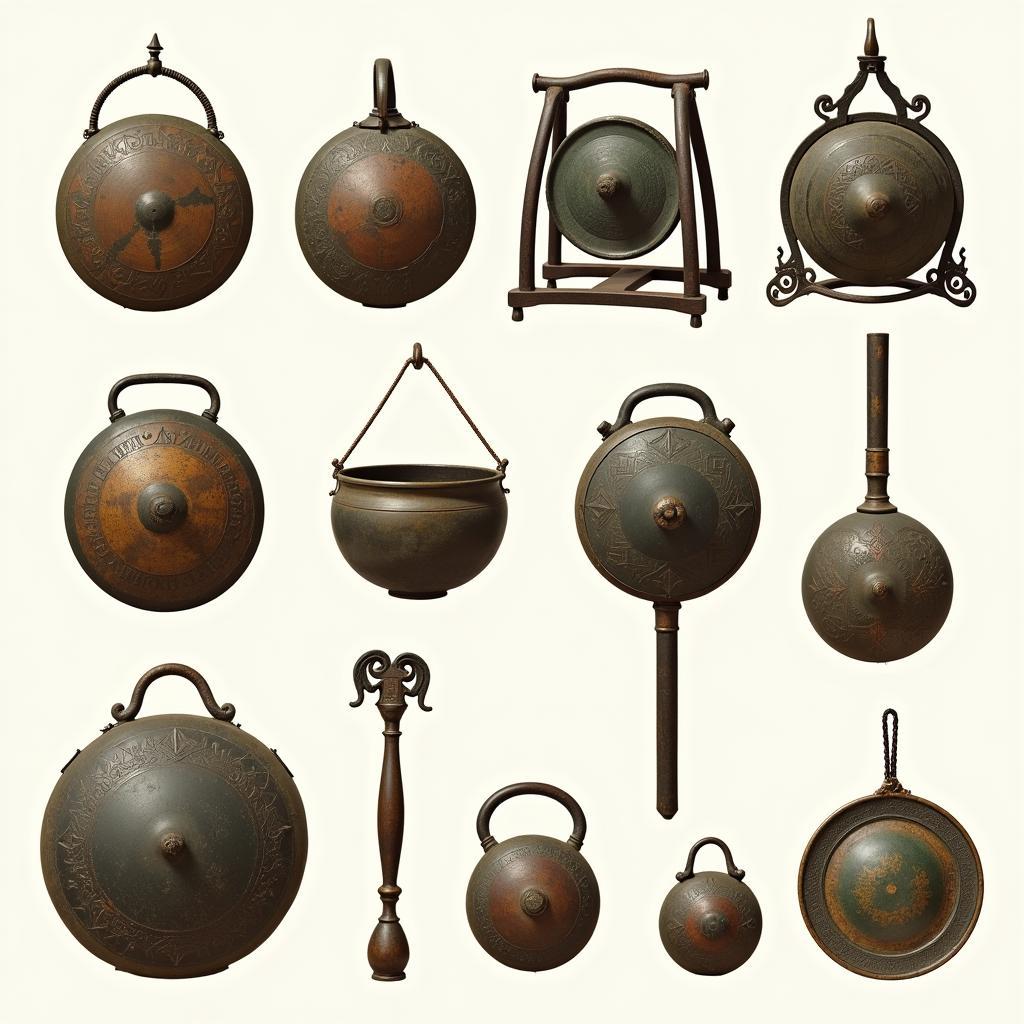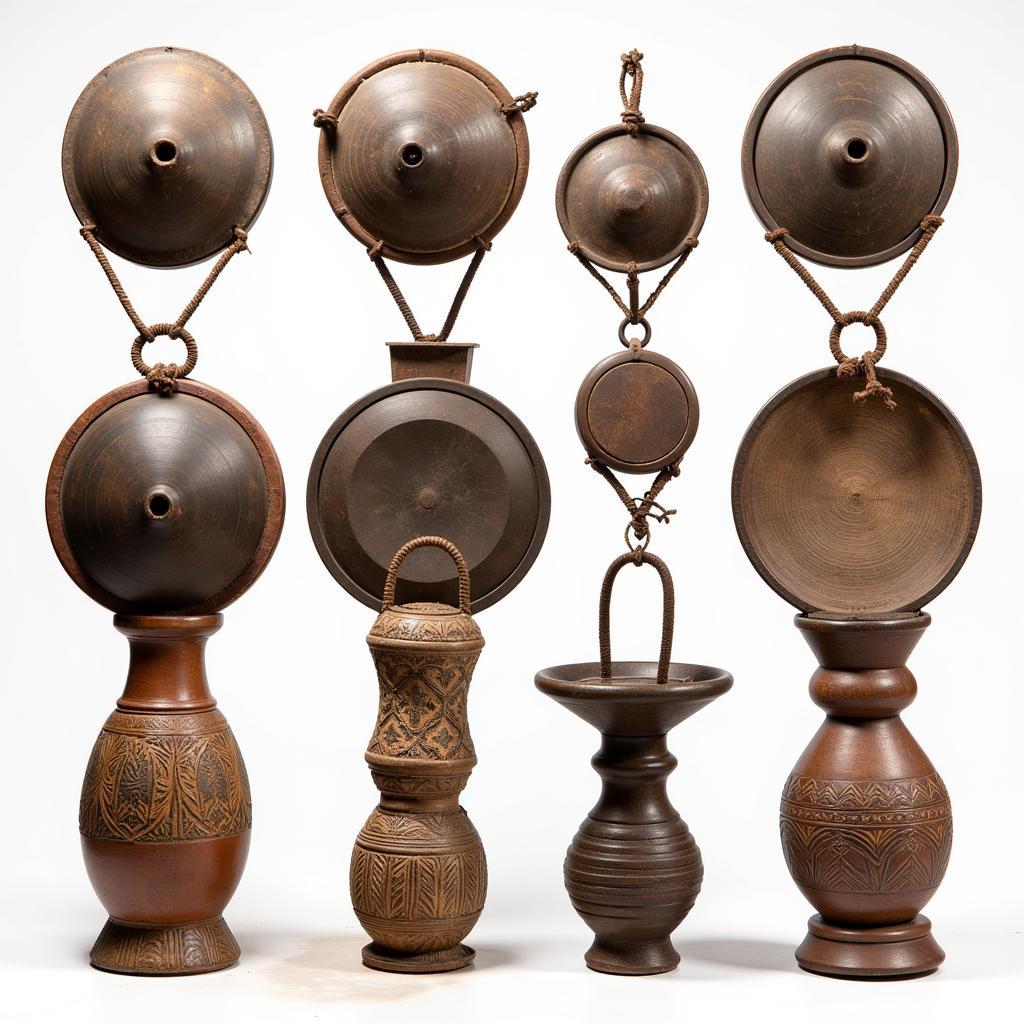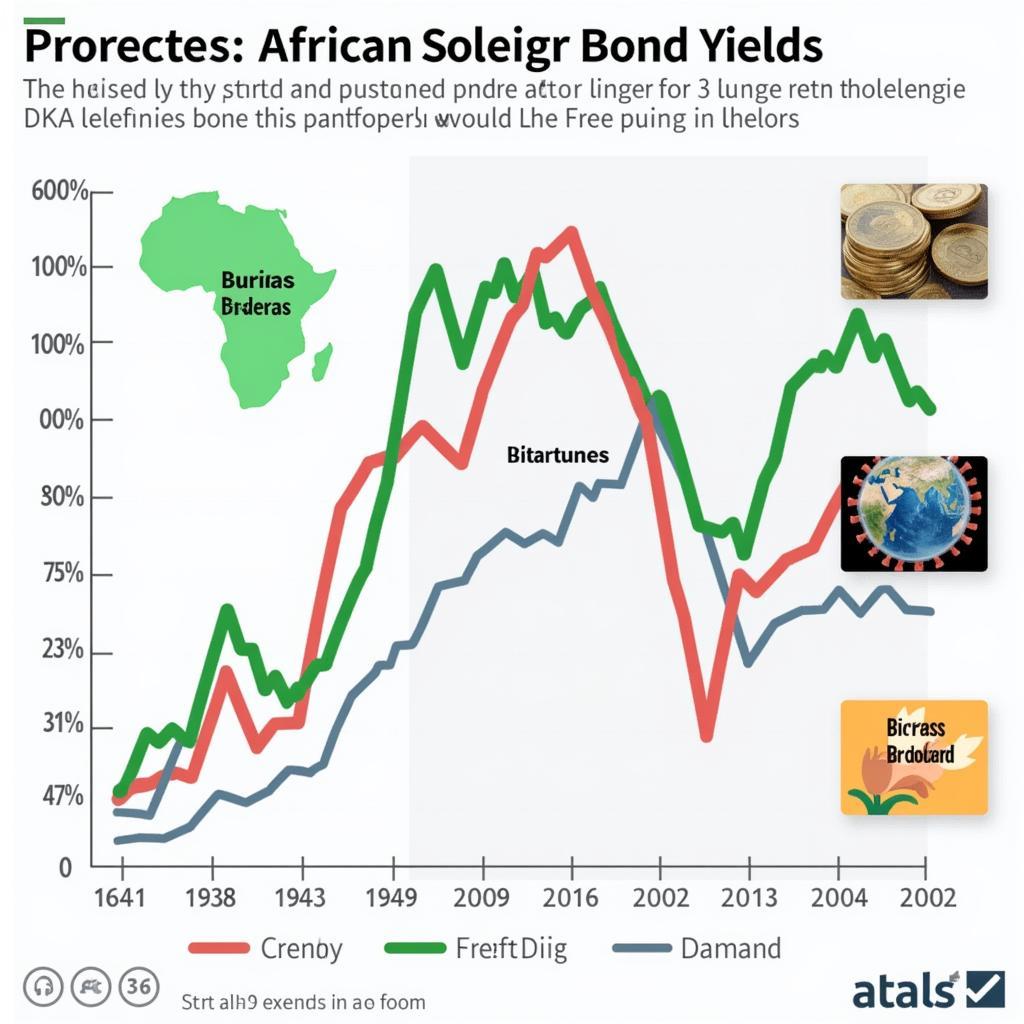The Resonant Power of the African Gong
The African Gong is more than just a metal disc; it’s a voice, a storyteller, and a heartbeat of tradition. From ceremonial rituals to royal announcements, the gong plays a vital role in numerous African cultures, resonating with a power that transcends mere sound. This article explores the rich history, diverse forms, and cultural significance of the African gong, revealing its captivating story.
Exploring the History of the African Gong
The origins of the gong in Africa are intertwined with the continent’s rich history of metalworking. While pinpointing the exact moment of its creation is difficult, evidence suggests that gongs have been present in various forms across Africa for centuries. From the elaborate bronze gongs of Nigeria to the simpler iron gongs of East Africa, the instrument has evolved alongside the communities that embrace it. Early forms of the gong likely served as signaling devices, their powerful sound carrying across vast distances. Over time, their role expanded, becoming integral to ceremonies, rituals, and artistic expression. This evolution speaks to the adaptability and ingenuity of African artisans, who have continuously refined and reimagined the gong’s form and function. These developments highlight the gong’s profound connection to the cultural fabric of diverse African societies.
The use of the African gong varies significantly across the continent. In some cultures, it accompanies dance performances, adding a rhythmic layer to the movement and enhancing the storytelling. In others, it serves as a sacred instrument, reserved for religious ceremonies and rituals. This diversity reflects the unique traditions and beliefs of each community, showcasing the gong’s versatility as a cultural artifact.
After this insightful look into history, let’s explore the diversity of African gongs.
 The History of African Gongs
The History of African Gongs
Types of African Gongs: A Symphony of Sounds
African gongs come in a breathtaking array of shapes and sizes, each producing a unique sound that reflects its region of origin and intended purpose. The slit gong, found in West Africa, is known for its distinctive two-toned sound, created by the strategically placed slits in the metal. This allows for complex rhythmic patterns, adding a rich layer to musical performances. Another prominent type is the talking drum, although not strictly a gong, is often used in conjunction with gongs and creates a similar resonant sound, mimicking the tones and rhythms of spoken language.
African gong gong instrument produce sound provides a detailed explanation about the different sounds a gong can produce. Other gongs, particularly those used in royal courts, are intricately decorated with symbolic patterns and figures, demonstrating the high level of artistry associated with these instruments. The size of the gong also plays a crucial role in its sound; larger gongs produce deeper, more resonant tones, while smaller gongs offer higher pitches. The next section explores the cultural significance of the African gong.
 Diverse Types of African Gongs
Diverse Types of African Gongs
The Cultural Significance of the African Gong
The African gong isn’t merely a musical instrument; it is a symbol of power, tradition, and community. In many African cultures, the gong is associated with royalty and authority. Its resonant sound announces the arrival of important figures, signals the start of ceremonies, and conveys messages across communities. The gong also plays a vital role in religious practices, acting as a conduit between the physical and spiritual realms. Its vibrations are believed to carry prayers and invocations to the gods and ancestors.
African earth science discusses the materials used in creating these instruments. The gong’s importance in traditional music is undeniable. It provides the rhythmic backbone for many African musical genres, driving the energy of dances and ceremonies. This cultural significance highlights the gong’s multifaceted role in shaping African identity and heritage.
What is the Purpose of an African Gong?
An African gong serves multiple purposes depending on the specific culture and context. It can be a musical instrument, a signaling device, a symbol of authority, or a sacred object used in rituals.
How is the Sound of an African Gong Produced?
The sound of an African gong is produced by striking the metal surface with a mallet or stick. The vibrations of the metal create sound waves that resonate through the air, producing a rich, powerful tone.
Preserving the Legacy: The Future of the African Gong
Today, the African gong continues to resonate in both traditional and contemporary contexts. While its role in some communities remains unchanged, it has also found its way into modern music genres, blending traditional sounds with contemporary influences. Preserving the legacy of the African gong is essential for safeguarding African cultural heritage. Efforts to document and share the history, craftsmanship, and cultural significance of the gong are crucial for ensuring its continued vibrancy for generations to come.
African dance performance showcases how the gong accompanies traditional dances. The African gong’s enduring presence in modern music underscores its timeless appeal and adaptability.
Conclusion
The African gong is more than just an instrument; it’s a living testament to the rich cultural tapestry of Africa. From its historical origins to its contemporary uses, the gong continues to resonate with power and meaning. Understanding its significance provides a deeper appreciation for the diversity and depth of African culture. Remember the power of the African gong – it speaks volumes.
African sea and African jungle in crater offer glimpses into the diverse landscapes of Africa, the very places where these rich traditions thrive.
FAQ
- What are the different types of African gongs?
- How is the African gong used in ceremonies?
- What is the significance of the gong in African music?
- How is the sound of an African gong produced?
- Where can I learn more about African gongs?
- What materials are African gongs made from?
- Are African gongs still used today?
Situations where frequently asked questions arise.
Customers often inquire about the different types of gongs, their origins, and how they are used. They are curious about the cultural significance and the symbolism associated with the instrument. Many are interested in purchasing a gong and ask about the different sizes, materials, and price ranges.
Further exploration
You might also be interested in learning about other African musical instruments, traditional African ceremonies, or the history of metalworking in Africa. Check out our other articles for more information.
Call to action
For any assistance, please contact us at Phone: +255768904061, Email: kaka.mag@gmail.com, or visit us at Mbarali DC Mawindi, Kangaga, Tanzania. We have a 24/7 customer service team ready to help.


